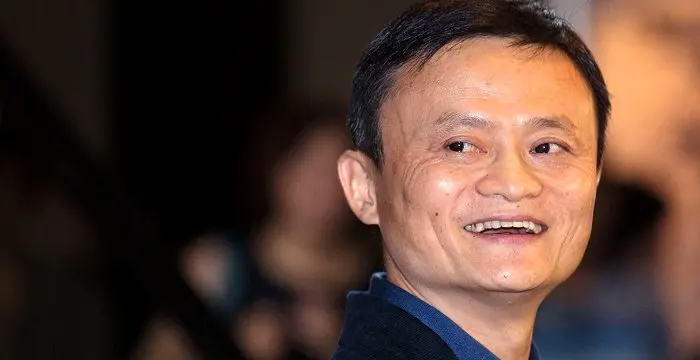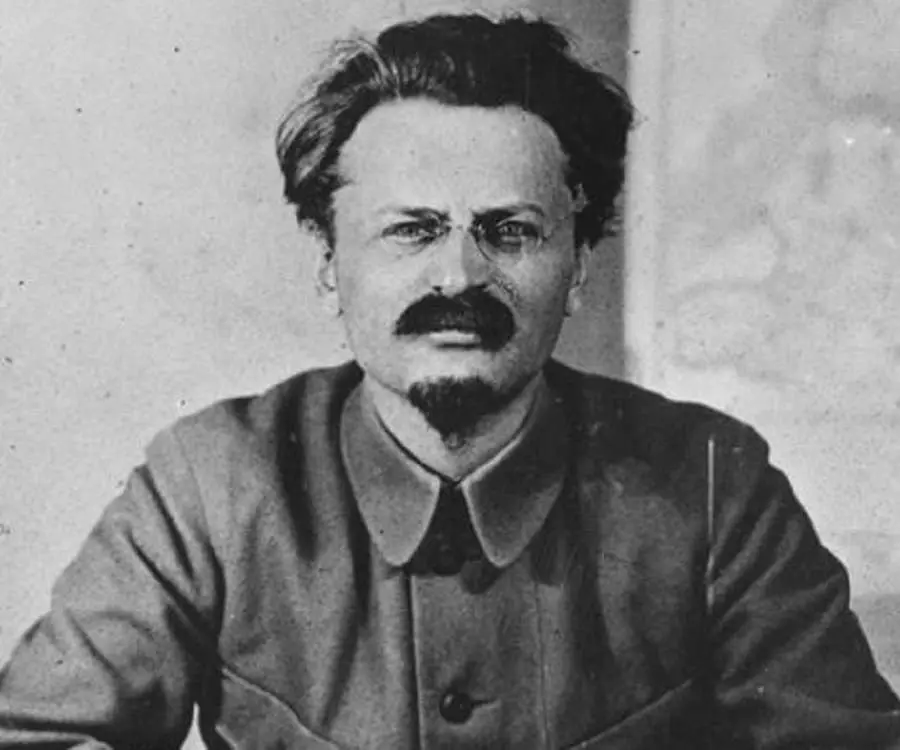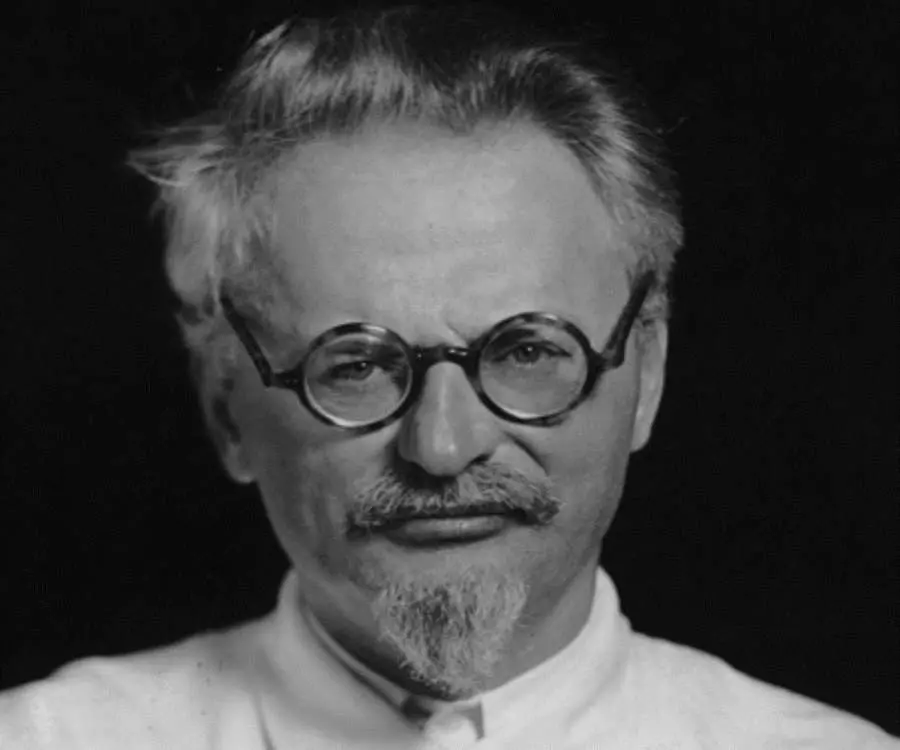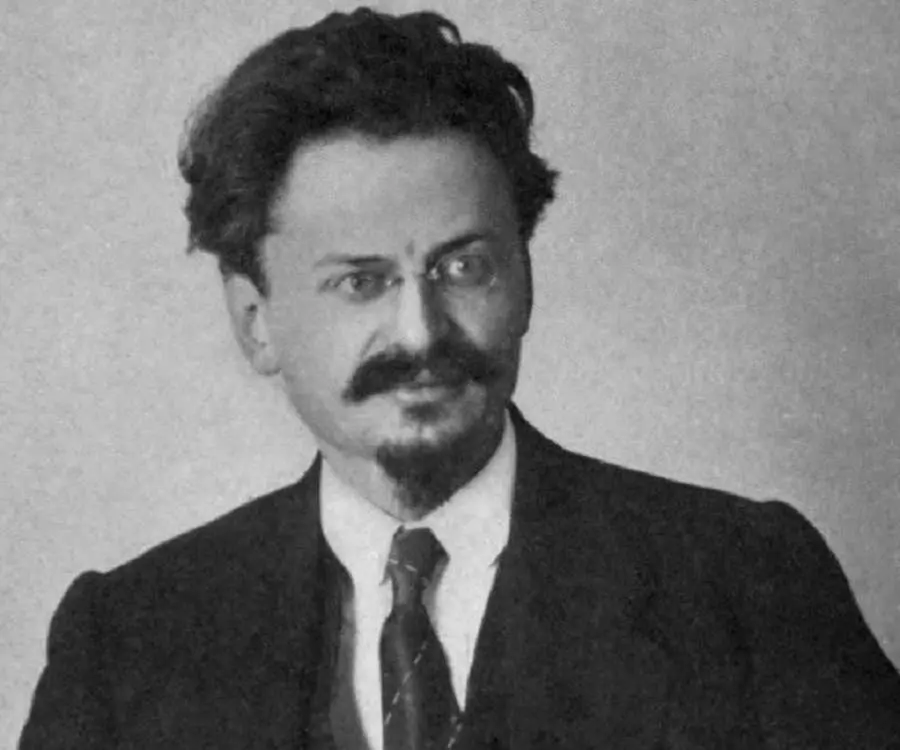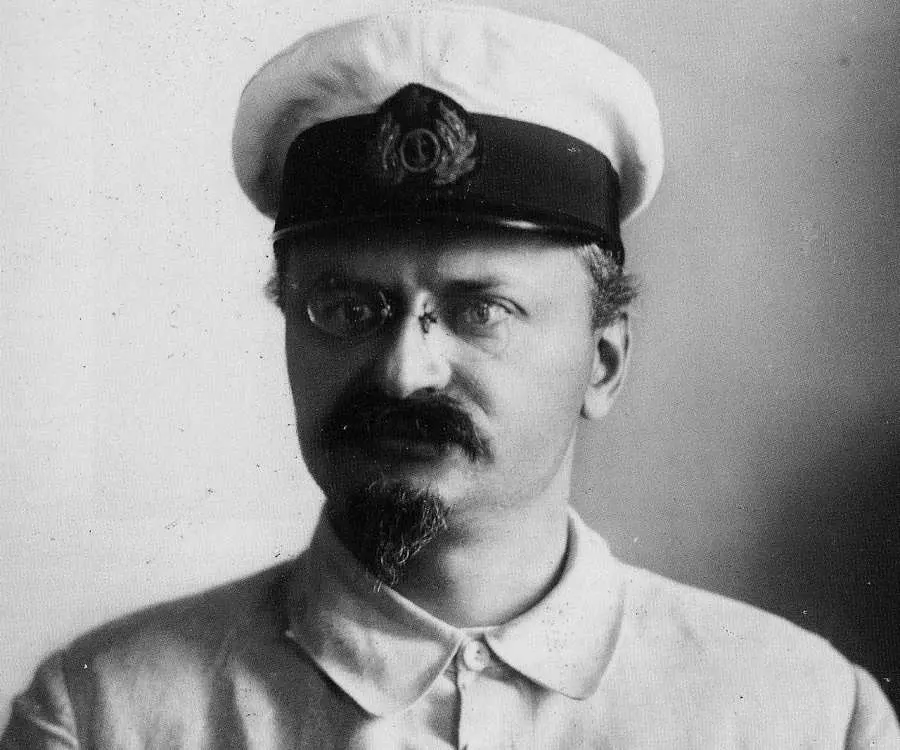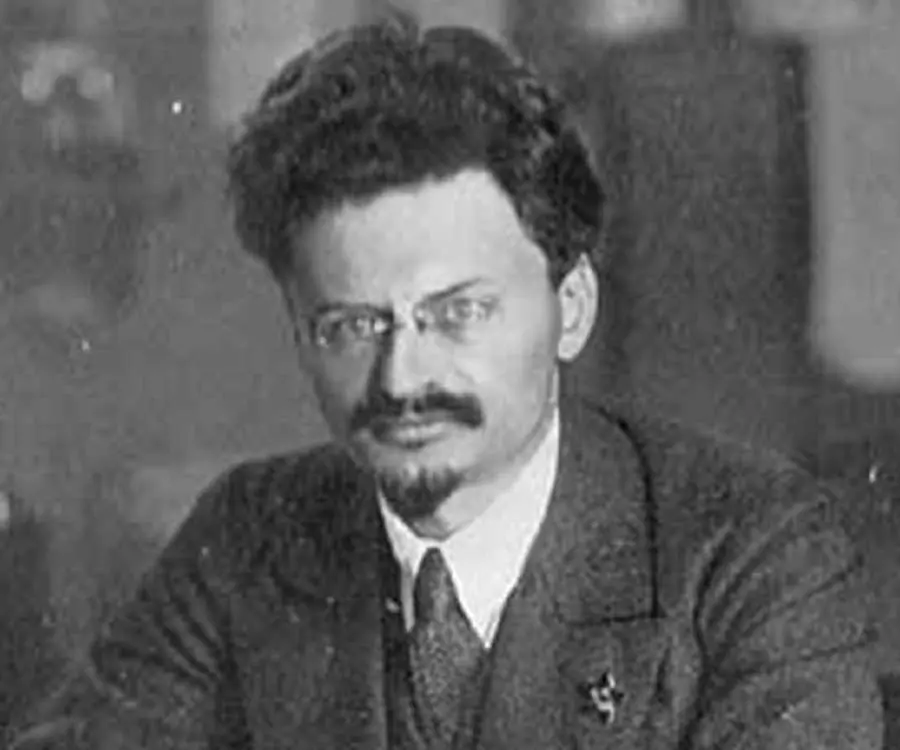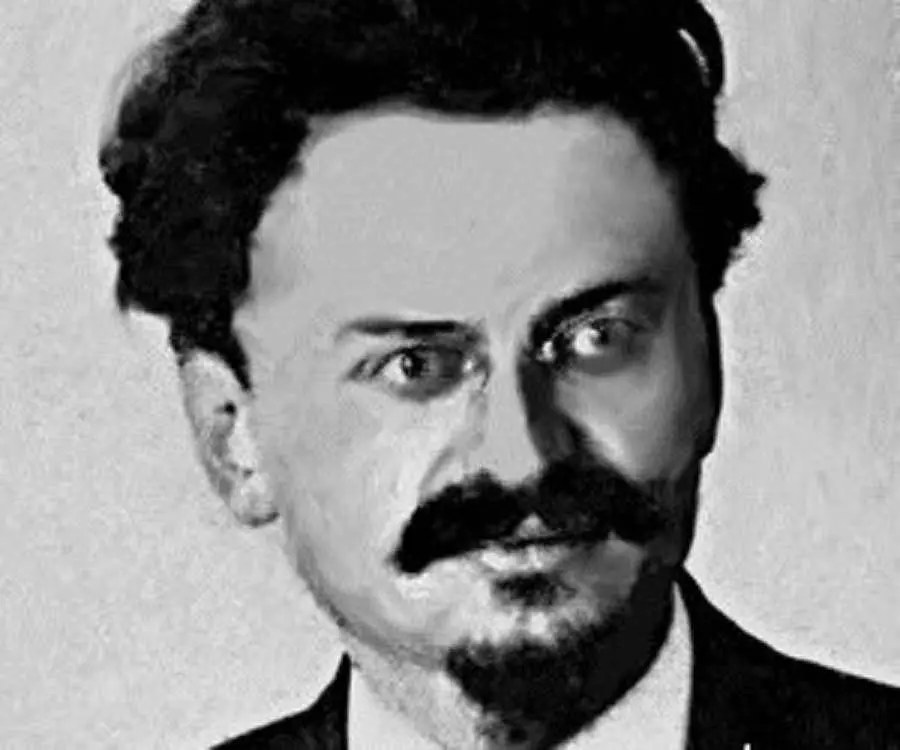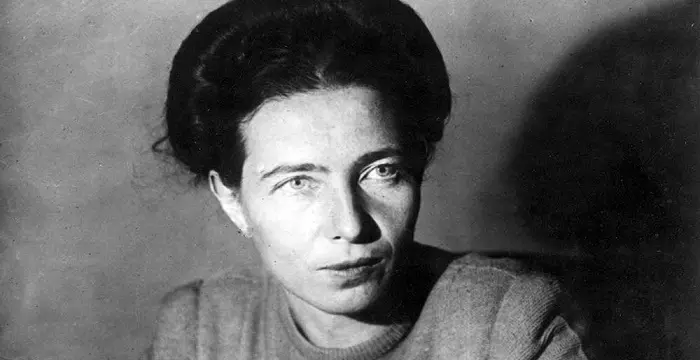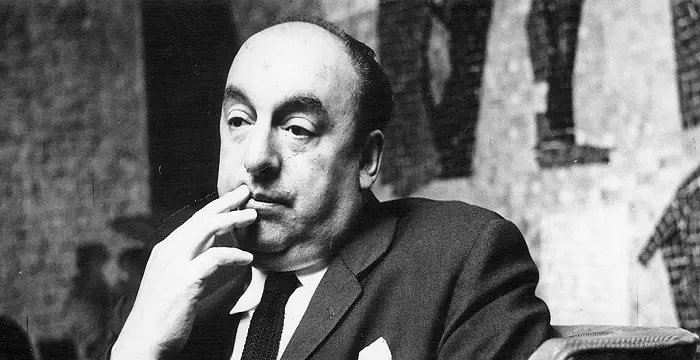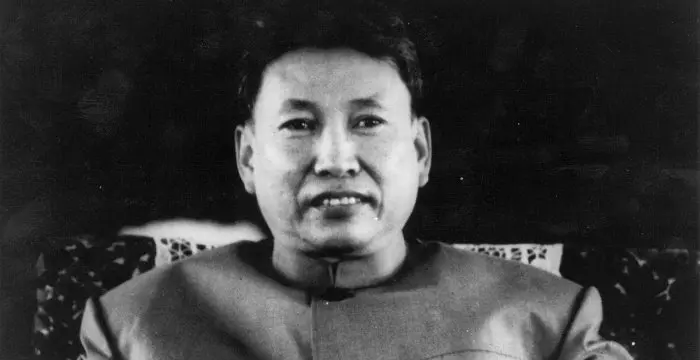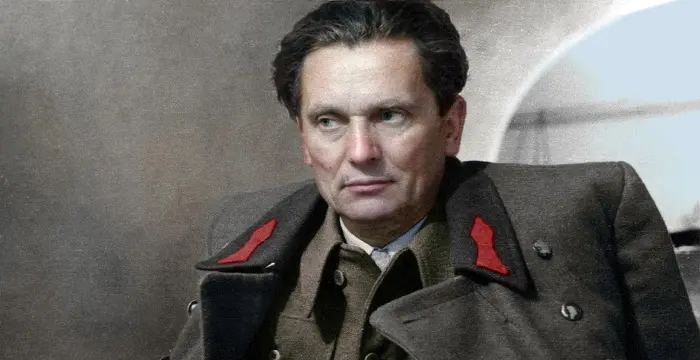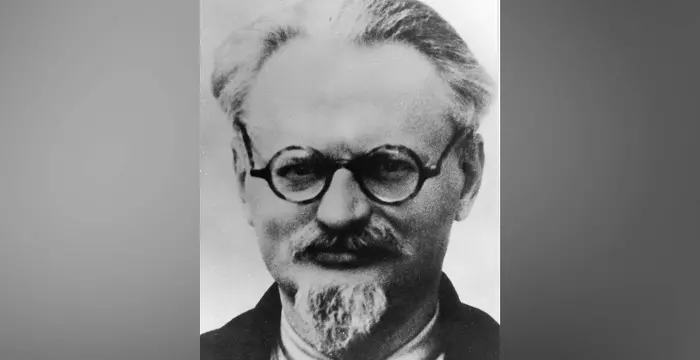
Leon Trotsky - Founder, Facts and Personal Life
Leon Trotsky's Personal Details
Leon Trotsky was a Russian politician, a Marxist revolutionary and the founder and the first leader of the Red Army
| Information | Detail |
|---|---|
| Birthday | November 7, 1879 |
| Died on | August 21, 1940 |
| Nationality | Russian, Ukrainian |
| Famous | Communists, Philosophers, Leaders, Political Leaders, Revolutionaries, Writers, First Leader of the Red Army, Founder |
| Ideologies | Communists |
| Nick names | Lev Davidovich Bronshtein |
| Spouses | Aleksandra Sokolovskaya (m. 1899–1902), Natalia Sedova (m. 1903–1940) |
| Siblings | Alexander, Liza, Olga |
| Known as | Lev Davidovich Bronshtein |
| Childrens | Lev Sedov, Nina Nevelson, Sergei Sedov, Zinaida Volkova |
| Universities |
|
| Cause of death |
|
| Birth Place | Kherson Oblast |
| Born Country | Ukraine |
| Political Ideology | RSDLP, SDPS, Communist Party of the Soviet Union, Left Opposition, IV International |
| Religion | atheist |
| Height | 174 |
| Gender | Male |
| Father | David Bronshtein |
| Mother | Anna |
| Sun Sign | Scorpio |
| Born in | Kherson Oblast |
| Famous as | Founder and first leader of the Red Army |
| Died at Age | 60 |
// Famous Founder
Jack Ma
Jack Ma is a Business tycoon belonging to China known for his e-commerce business venture ‘Alibaba’. This biography of Jack Ma provides detailed information about his childhood, profile, career & timeline
Leon Trotsky's photo
Who is Leon Trotsky?
Leon Trotsky was one of the key revolutionaries in the history of Russia, who fought, alongside the likes of Lenin, for the liberation of the working class from the dominating regime of monarchy. Appointed the Commissar of War, he helped to defeat the forces that were opposed to Bolshevik principles. He was responsible for building the Red Army and led it to victory in the battle against the White Army effectively. His forays resulted in being arrested and exiled to Siberia several times, the final one being a complete banishment from the Soviet Union. All his life, he struggled to promote the theories of Marxist society and opposed mere capitalism as a means of progress. He supported Vladmir Lenin and his theories, though he disagreed on several principles. After Lenin’s death, the power was transferred to Joseph Stalin. Thereafter, Trotsky’s hold on the party declined steadily, resulting in a permanent exile from the entire country. Author of several books, he continued to promote Marxist and Socialist ways of governance. He was a strong critic of the Stalin-led government. He was brutally assassinated in his study in Mexico City, where he was spending his time in exile.
Childhood & Early Life
Born on November 7, 1879, as Lev Davidovich Bronshtein, Leon Trotsky was the fifth of the eight children born to David Leontyevich Bronshtein, and Anna Bronshtein. His was a well-to-do family with his father being a farmer and, despite being Jewish, they were not very religious.
His father sent him to Odessa, in a German school, for him to commence his education. Odessa was a bustling cosmopolitan city, and it was from here that Trotsky developed an international outlook, very early in his childhood.
Revolutionary activities had increased pace in Russia around that time. In 1896, Trotsky too became involved in revolutionary politics after moving to Nikolayev.
He had enrolled for pursuing a pure Mathematics degree in college, but he soon quit. Instead, he got involved and helped in setting up the South Russian Worker’s Union in 1897.
Career
Leon Trotsky wrote pamphlets and leaflets professing socialistic ideas and distributed them among the people. In 1898, he was imprisoned along with several other members of the Union, for two years.
In 1900, he was sentenced to a four-year exile and had to leave to Siberia, along with his wife. His two daughters, Zinaida and Nina, were both born in Siberia, but escaped from there with their mother.
He associated himself with a London based newspaper ‘Iskra’ and began writing for it. In 1902, he escaped from Siberia and moved to London, where he changed his name to Trotsky, and worked with socialist stalwarts like Lenin.
In 1903, the Iskra members split into two factions, the Bolsheviks and the Mensheviks. The Bolsheviks were led by Lenin, and the Mensheviks, by Martov, whom Trotsky followed.
Members of the two factions kept changing sides, and Trotsky decided to leave the Mensheviks due to a difference in their policies and their reluctance to reconcile with Lenin.
General unrest with the ruling government picked up pace, and in January 1905, a strike by the workers was called for, which grew into a massive protest at St. Petersburg. On the Sunday that followed, a peaceful protest march by citizens was fired at and thousands died, an event that would be marked in History as ‘Bloody Sunday’.
Following the events of Bloody Sunday, Trotsky returned to Russia to work more closely with both the Bolsheviks and the Mensheviks. However, he had to flee to Finland in hiding, due to betrayal by some members, and to avoid getting caught by the police.
The period of unrest continued all over Russia, and strikes at work places became a regular feature, affecting the rail system and creating chaos. This gave Trotsky an opportunity to return to Russia undetected and to get involved with the newspapers once again.
Trotsky not only wrote, but also voiced his protest against the Tsarist government that soon led him to face trial once again. In 1906, at a trial, he gave a speech that catapulted him to fame and established him as an accomplished public speaker, though he had to suffer another exile to Siberia.
In 1907, Trotsky escaped again and made his way to London, and later to Vienna. There, he met Adolph Joffe, who remained his friend for the next 20 years, and also taught him about psychoanalysis.
He spent much of the next few years in exile in various European countries, but he kept at writing revolutionary material for magazines. He started the newspaper, ‘Pravda’ which ran until 1912.
In 1917, the Tsar, Nicholas II’s government was overthrown and it brought Trotsky back to Russia. A new party Soviet Council of People’s Commissars, chaired by Vladmir Lenin was formed, and Leon Trotsky was made the Commissar of Foreign Affairs to make peace with Germany.
In the following year, Lenin ordered the formation of the ‘Red Army’ and made Trotsky its head. The first task of the Red Army was to neutralize the White Army forces engaged in the civil war, and Trotsky emerged victorious.
After the Civil War in 1920-21, efforts were on to restore peace and order, and Trotsky was keen on allowing the State to control the trade unions. Although Lenin was opposed to this idea and a rift had developed between the two, Trotsky reconciled in the end.
By 1922, Lenin succumbed to ill health and suffered strokes that sapped his strength slowly. Though it seemed that Trotsky would take his place, it was Joseph Stalin who gathered forces to stall the ascension of Trotsky as the next leader.
After Lenin’s death in 1924, Trotsky was completely overshadowed by Stalin. Trotsky was pushed out of the government and eventually, evicted from the country as well.
Between 1925 and 1928, Trotsky was consistently pushed out from party affairs by Stalin and his allies. His role in the Russian Revolution was discredited by them, and he was expelled from the party and sent on exile.
In 1929, Trotsky was banished from the Soviet Union. The next few years were spent in France, Turkey and Norway, before he settled in Mexico city, from where he continued to criticize Stalin.
Major Works
Leon Trotsky’s book, ‘The History of Russian Revolution’ is a classic account of the political, social and economical situations that led and governed the Russian Revolution. In the book, he has described how the unrest among the oppressed classes led to the overthrowing of the monarchist rule, and heralded a new era of socialist government under Lenin’s leadership.
Published in 1930, Trotsky’s ‘My Life: An Attempt at an Autobiography’ is the only autobiography written by a Bolshevik. He wrote this book while on his long exile from the Soviet Union; it highlighted not only his lifelong struggle, but also the horrors of the Stalinist regime.
Achievements
The ‘October Revolution’, which was led by Trotsky was a successful example of the concept of Permanent Revolution against the monarchic regime. This was a great achievement in the struggle against the bourgeoisie, because the problems faced by the working class were not solved, until then.
He also developed the concept of the ‘United Front’, which was a method of uniting all revolutionaries and reformists in a common struggle. His theories also voiced protests against the rising Fascist governance in Germany and Spain, and advocated a united front for them too.
Personal Life & Legacy
Trotsky’s first marriage was during his tenure in prison in 1900, to Aleksandra Sokolovskaya, with whom he had two daughters, Zinaida and Nina. The marriage was short-lived and the couple soon got divorced. His daughters were taken care of by his parents.
In 1902, he met Natalia Ivanovna Sedova, who became his companion and second wife, till his death. They had two children, Lev Sedov and Sergei Sedov, both of whom died before their parents.
On August 20, 1940, while he was sitting at his desk, he was attacked by Ramon Mercader, an undercover agent for the Soviet secret police. He was hit by an ice pick which punctured his skull, injuring him severely and killing him eventually.
Trivia
Born as Lev Bronstein, this Russian revolutionary adopted a new name from the jailer of the prison he had been to. This name became his revolutionary pseudonym, and he used it for the rest of his life.
This fiercely socialist Russian revolutionary was highly influenced by the theories of Karl Marx, the German philosopher. He was arrested and charged for spreading dangerous ideas and causing political disorder, and sent on exile to Siberia.
Childhood & Early Life
Born on November 7, 1879, as Lev Davidovich Bronshtein, Leon Trotsky was the fifth of the eight children born to David Leontyevich Bronshtein, and Anna Bronshtein. His was a well-to-do family with his father being a farmer and, despite being Jewish, they were not very religious.
His father sent him to Odessa, in a German school, for him to commence his education. Odessa was a bustling cosmopolitan city, and it was from here that Trotsky developed an international outlook, very early in his childhood.
Revolutionary activities had increased pace in Russia around that time. In 1896, Trotsky too became involved in revolutionary politics after moving to Nikolayev.
He had enrolled for pursuing a pure Mathematics degree in college, but he soon quit. Instead, he got involved and helped in setting up the South Russian Worker’s Union in 1897.
// Famous Leaders
Edi Rama
Edi Rama is the current Prime Minister of Albania. Check out this biography to know about his childhood, life, achievements, works & timeline.
Tecumseh
Tecumseh was a Native American leader of the Shawnee clan. This biography profiles his childhood, life and timeline.
Khalifa bin Zayed Al Nahyan
Sheikh Khalifa bin Zayed Al Nahyan is the current President of the United Arab Emirates (UAE). Check out this biography to know about his birthday, childhood, family life, achievements and fun facts about him.
Leon Trotsky biography timelines
- // 7th Nov 1879Born on November 7, 1879, as Lev Davidovich Bronshtein, Leon Trotsky was the fifth of the eight children born to David Leontyevich Bronshtein, and Anna Bronshtein. His was a well-to-do family with his father being a farmer and, despite being Jewish, they were not very religious.
- // 7th Nov 1879Born on November 7, 1879, as Lev Davidovich Bronshtein, Leon Trotsky was the fifth of the eight children born to David Leontyevich Bronshtein, and Anna Bronshtein. His was a well-to-do family with his father being a farmer and, despite being Jewish, they were not very religious.
- // 1896Revolutionary activities had increased pace in Russia around that time. In 1896, Trotsky too became involved in revolutionary politics after moving to Nikolayev.
- // 1896Revolutionary activities had increased pace in Russia around that time. In 1896, Trotsky too became involved in revolutionary politics after moving to Nikolayev.
- // 1897He had enrolled for pursuing a pure Mathematics degree in college, but he soon quit. Instead, he got involved and helped in setting up the South Russian Worker’s Union in 1897.
- // 1897He had enrolled for pursuing a pure Mathematics degree in college, but he soon quit. Instead, he got involved and helped in setting up the South Russian Worker’s Union in 1897.
- // 1898Leon Trotsky wrote pamphlets and leaflets professing socialistic ideas and distributed them among the people. In 1898, he was imprisoned along with several other members of the Union, for two years.
- // 1900In 1900, he was sentenced to a four-year exile and had to leave to Siberia, along with his wife. His two daughters, Zinaida and Nina, were both born in Siberia, but escaped from there with their mother.
- // 1900Trotsky’s first marriage was during his tenure in prison in 1900, to Aleksandra Sokolovskaya, with whom he had two daughters, Zinaida and Nina. The marriage was short-lived and the couple soon got divorced. His daughters were taken care of by his parents.
- // 1902He associated himself with a London based newspaper ‘Iskra’ and began writing for it. In 1902, he escaped from Siberia and moved to London, where he changed his name to Trotsky, and worked with socialist stalwarts like Lenin.
- // 1902In 1902, he met Natalia Ivanovna Sedova, who became his companion and second wife, till his death. They had two children, Lev Sedov and Sergei Sedov, both of whom died before their parents.
- // 1903In 1903, the Iskra members split into two factions, the Bolsheviks and the Mensheviks. The Bolsheviks were led by Lenin, and the Mensheviks, by Martov, whom Trotsky followed.
- // Jan 1905General unrest with the ruling government picked up pace, and in January 1905, a strike by the workers was called for, which grew into a massive protest at St. Petersburg. On the Sunday that followed, a peaceful protest march by citizens was fired at and thousands died, an event that would be marked in History as ‘Bloody Sunday’.
- // 1906Trotsky not only wrote, but also voiced his protest against the Tsarist government that soon led him to face trial once again. In 1906, at a trial, he gave a speech that catapulted him to fame and established him as an accomplished public speaker, though he had to suffer another exile to Siberia.
- // 1907In 1907, Trotsky escaped again and made his way to London, and later to Vienna. There, he met Adolph Joffe, who remained his friend for the next 20 years, and also taught him about psychoanalysis.
- // 1912He spent much of the next few years in exile in various European countries, but he kept at writing revolutionary material for magazines. He started the newspaper, ‘Pravda’ which ran until 1912.
- // 1917In 1917, the Tsar, Nicholas II’s government was overthrown and it brought Trotsky back to Russia. A new party Soviet Council of People’s Commissars, chaired by Vladmir Lenin was formed, and Leon Trotsky was made the Commissar of Foreign Affairs to make peace with Germany.
- // 1920After the Civil War in 1920-21, efforts were on to restore peace and order, and Trotsky was keen on allowing the State to control the trade unions. Although Lenin was opposed to this idea and a rift had developed between the two, Trotsky reconciled in the end.
- // 1922By 1922, Lenin succumbed to ill health and suffered strokes that sapped his strength slowly. Though it seemed that Trotsky would take his place, it was Joseph Stalin who gathered forces to stall the ascension of Trotsky as the next leader.
- // 1924After Lenin’s death in 1924, Trotsky was completely overshadowed by Stalin. Trotsky was pushed out of the government and eventually, evicted from the country as well.
- // 1925 To 1928Between 1925 and 1928, Trotsky was consistently pushed out from party affairs by Stalin and his allies. His role in the Russian Revolution was discredited by them, and he was expelled from the party and sent on exile.
- // 1929In 1929, Trotsky was banished from the Soviet Union. The next few years were spent in France, Turkey and Norway, before he settled in Mexico city, from where he continued to criticize Stalin.
- // 1930Published in 1930, Trotsky’s ‘My Life: An Attempt at an Autobiography’ is the only autobiography written by a Bolshevik. He wrote this book while on his long exile from the Soviet Union; it highlighted not only his lifelong struggle, but also the horrors of the Stalinist regime.
- // 20th Aug 1940On August 20, 1940, while he was sitting at his desk, he was attacked by Ramon Mercader, an undercover agent for the Soviet secret police. He was hit by an ice pick which punctured his skull, injuring him severely and killing him eventually.
// Famous Communists
Simone de Beauvoir
Simone de Beauvoir was an eminent French writer, intellectual, activist, and philosopher. This biography profiles her childhood, life, thoughts, achievements and timeline.
Karl Marx
Karl Marx was a Prussian-German philosopher, revolutionary, historian and socialist whose communist ideologies and works laid the foundation for ‘Marxism’. Explore this biography to learn more about his childhood, life achievements, works & timeline.
Pablo Neruda
Pablo Neruda was a Chilean poet, politician and Nobel laureate. Go through this biography to learn more about his profile, childhood, life and timeline.
Pol Pot
Pol Pot was the Cambodian revolutionary who led the Khmer Rouge. This biography provides a glimpse of his childhood, career, profile and timeline.
Nikita Khrushchev
Nikita Khrushchev was a former Soviet premier. This biography gives detailed information about his childhood, life, achievements and timeline.
Josip Broz Tito
Josip Broz Tito was the powerful revolutionary leader of Yugoslav Partisans. Check this biography to know more about his childhood, life, profile and timeline.
Leon Trotsky's FAQ
What is Leon Trotsky birthday?
Leon Trotsky was born at 1879-11-07
When was Leon Trotsky died?
Leon Trotsky was died at 1940-08-21
Where was Leon Trotsky died?
Leon Trotsky was died in Coyoacán
Which age was Leon Trotsky died?
Leon Trotsky was died at age 60
Where is Leon Trotsky's birth place?
Leon Trotsky was born in Kherson Oblast
What is Leon Trotsky nationalities?
Leon Trotsky's nationalities is Russian, Ukrainian
What is Leon Trotsky ideologies?
Leon Trotsky's ideologies is Communists
What is Leon Trotsky nick names?
Leon Trotsky's nickNames is Lev Davidovich Bronshtein
Who is Leon Trotsky spouses?
Leon Trotsky's spouses is Aleksandra Sokolovskaya (m. 1899–1902), Natalia Sedova (m. 1903–1940)
Who is Leon Trotsky siblings?
Leon Trotsky's siblings is Alexander, Liza, Olga
Who is Leon Trotsky childrens?
Leon Trotsky's childrens is Lev Sedov, Nina Nevelson, Sergei Sedov, Zinaida Volkova
What was Leon Trotsky universities?
Leon Trotsky studied at Odessa University
What is Leon Trotsky's cause of dead?
Leon Trotsky dead because of Execution
What is Leon Trotsky's political ideology?
Leon Trotsky's political ideology is RSDLP, SDPS, Communist Party of the Soviet Union, Left Opposition, IV International
What is Leon Trotsky's religion?
Leon Trotsky's religion is atheist
How tall is Leon Trotsky?
Leon Trotsky's height is 174
Who is Leon Trotsky's father?
Leon Trotsky's father is David Bronshtein
Who is Leon Trotsky's mother?
Leon Trotsky's mother is Anna
What is Leon Trotsky's sun sign?
Leon Trotsky is Scorpio
How famous is Leon Trotsky?
Leon Trotsky is famouse as Founder and first leader of the Red Army
